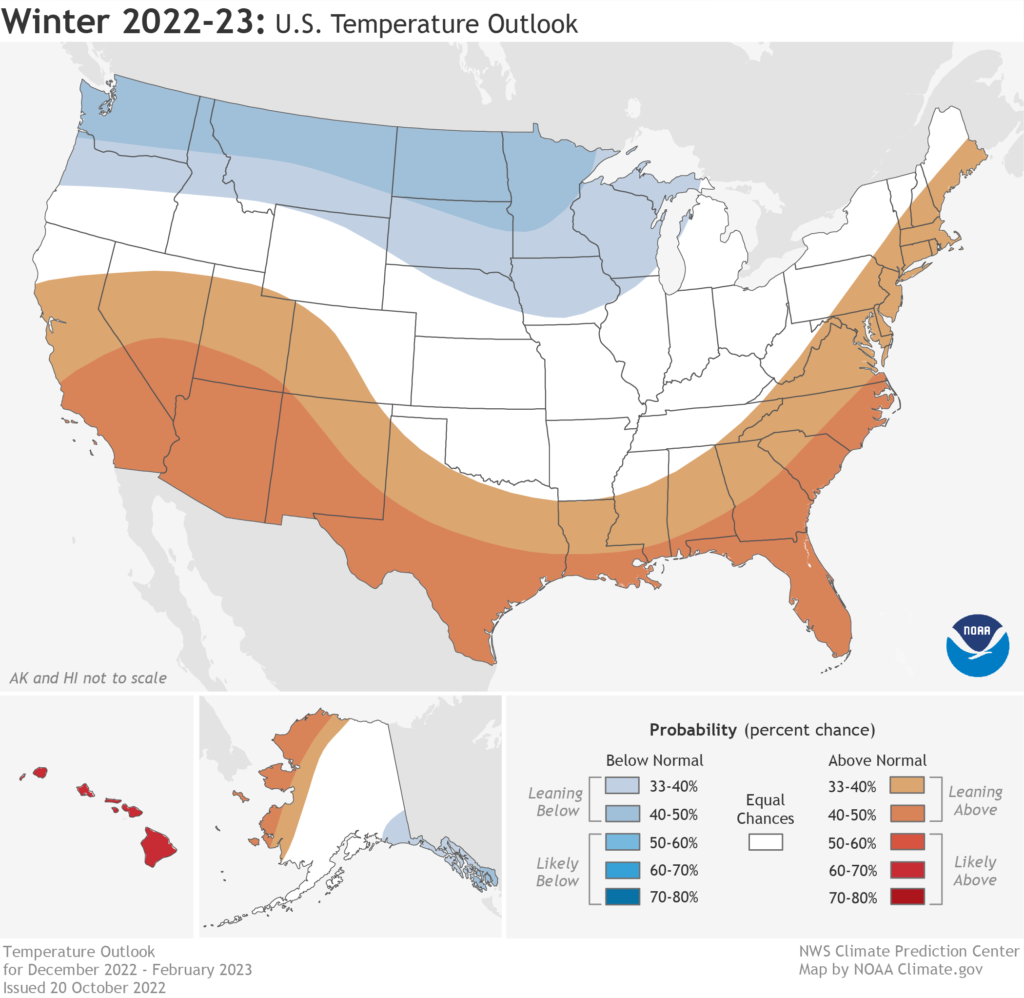The Old Farmer’s Almanac is predicting a colder, snowier winter than normal in the Atlantic Corridor region, which includes parts of Maryland. Last year, the almanac predicted similar temperature and snow levels, and the year before had predicted higher temperatures and precipitation.
Did previous winter seasons in Maryland match those predictions? The almanac claims to have a traditional accuracy of 80%, but studies and climatologists question the accuracy of the centuries-old guide.
According to their website, The Old Farmer’s Almanac is the oldest almanac in the country. It was established when George Washington was president in 1792. Every September, the publishers release an almanac that includes winter predictions, recipes, articles, astronomical data and planting information.
The almanac forecasts winter weather far in advance using a “secret weather formula” invented by their founder, Robert B. Thomas, which involves analyzing sunspots—large, strong magnetic fields that occur on the surface of the sun. Their website claims this secret formula is locked in a black box in their offices in Dublin, New Hampshire.
“Over the years, obviously, we’ve got state of the art technology and radar,” said Sarah Perreault, a senior editor at the Old Farmer’s Almanac. “So we can kind of marry the two together, but it’s still mostly based on three scientific disciplines of solar science, meteorology and climatology.”
Winter predictions and long-range weather forecasting is not the sole purpose of the guide, but it is a big reason people turn to it every year when it’s released.
“I would say that it’s a core part of the Old Farmer’s Almanac every year,” Perreault said. “So people use it for planning events, people use it for gardening. We’re really just trying to help anybody in any situation by providing information ahead of time.”
In the 2021-2022 winter season, the almanac predicted a cold, snowy season for the Atlantic Corridor (Region 2), which includes part of Maryland. The guide specifically noted that “the snowiest periods will occur in mid- and late December, from early to mid-January, and in mid-March.”
The Baltimore area had a total snowfall of 14.4 inches during the course of the season, primarily from a huge dump in January 2022.
In the 2020-2021 winter season, the almanac predicted a season with “sheets of sleet” for Maryland. The prediction specifically noted below-normal snowfall and near-normal precipitation levels.
The season ended with below-average snowfall in the Baltimore area, clocking in around 10.9 inches. The 30-year average snowfall for the Baltimore area is 20.1 inches.
Alfredo Ruiz-Barradas, the Maryland state climatologist said that although the Old Farmer’s Almanac formula is unknown, they are likely using a statistical model to predict weather patterns.
The almanac uses language like “above normal” and “below normal” to describe deviations from the 30-year average, which is normal for climatology according to Ruiz-Barradas. Right now, the time frame being compared to is the average from 1991 to 2020.
The weather predictions also note specific temperatures and weather patterns on a week-by-week basis. Ruiz-Barradas said that although climate technology allows us to look at general weather trends far ahead, it is impossible to know what is going to happen in a specific week three months from now.
“Caution has to be exercised when looking at these almanacs’ predictions,” he said. “Because, as I said, we do not know what is behind these models, as opposed to what we know is behind, nowadays, mathematical models [and] the climate models that exist now.”
Ruiz-Barradas recommends looking at the National Oceanic and Atmospheric Administration’s winter outlook. Their map predicts higher than normal temperatures in Maryland, and at equal chance for above, near or below average precipitation. These predictions contradict the Old Farmer’s Almanac predictions for the upcoming cold, snowy winter season.


You must be logged in to post a comment.